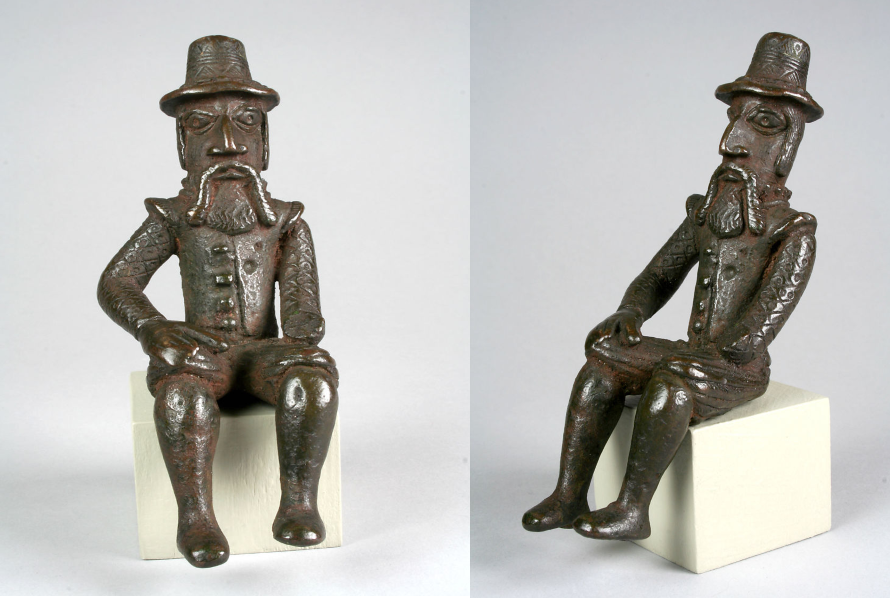
an unusual portuguese figure from 18th century benin
he is given edo attributes like
-larger than life proportion of the head
-large eyes with outlined pupils
-a patterned hat
-an unusual sitting posture
despite his european features, he is unlike his peers below 👇🏾
#randomxt
he is given edo attributes like
-larger than life proportion of the head
-large eyes with outlined pupils
-a patterned hat
-an unusual sitting posture
despite his european features, he is unlike his peers below 👇🏾
#randomxt
https://twitter.com/rhaplord/status/1510696961128685574

his head is enlarged and has heavily outlined eyes & pupils <accentuated gaze> that are typical of benin art, but quite unlike benin's depictions of Portuguese with small eyes and proportionate heads
although he has the typical rendering of European facial features (nose & beard)
although he has the typical rendering of European facial features (nose & beard)
his unique patterned hat with a knotted rope around its rim (rather than the usual helmet shown on Portuguese figures 👇🏾) and the seating posture (reserved for edo dignitaries versus the usually standing/crouching portuguese) may indicate his higher status from his peers 

the figure is dated to the 18th cent and is at the met (number 1991.17.31)
i didn't include it in this article b'se i thought i could find another source describing it besides kate erza's brief note; pg 69 in "Royal Art of Benin"
isaacsamuel.substack.com/p/the-evolving…
i didn't include it in this article b'se i thought i could find another source describing it besides kate erza's brief note; pg 69 in "Royal Art of Benin"
isaacsamuel.substack.com/p/the-evolving…
• • •
Missing some Tweet in this thread? You can try to
force a refresh
























